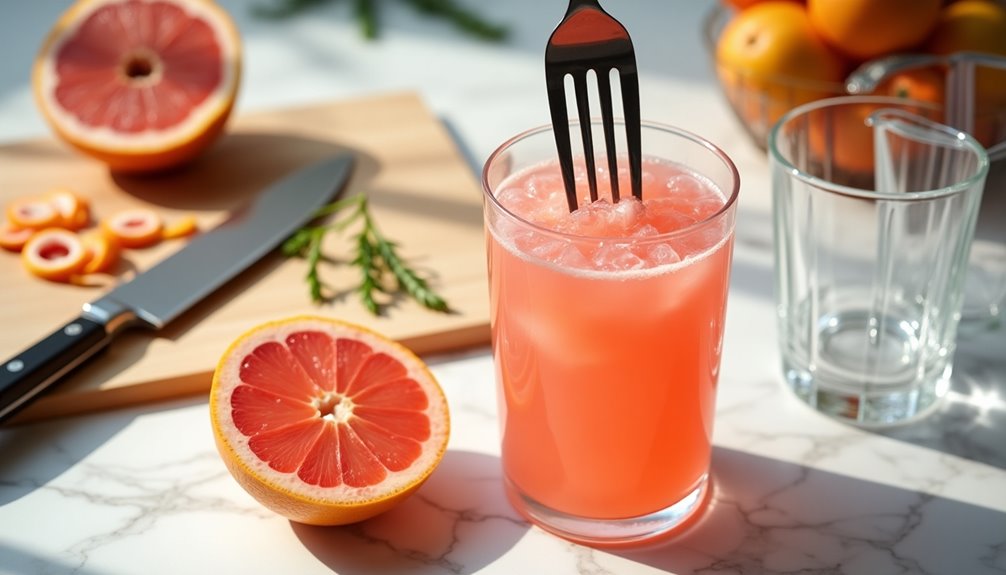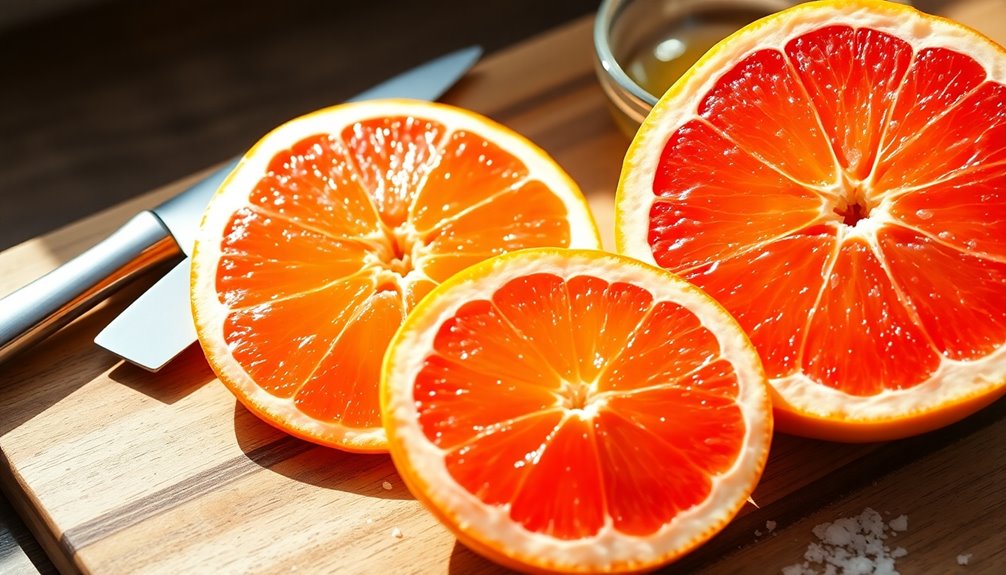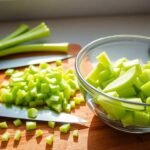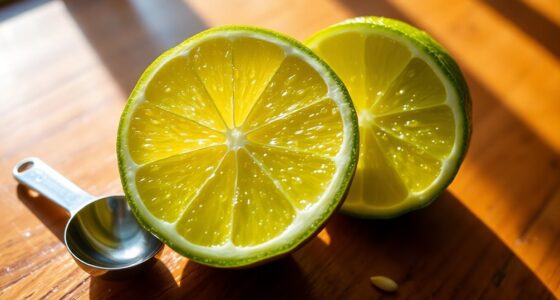To juice a grapefruit without a juicer, start by peeling the grapefruit and chopping it into smaller pieces. Then, blend those pieces until smooth. Next, pour the mixture through a fine mesh strainer or nut milk bag, pressing gently to extract as much juice as possible. You can enjoy the fresh juice right away or store it in the fridge for a couple of days. Want to discover even more ways to juice? You can also explore other fruits for juicing at home. For instance, if you’re curious about how to extract juice from pineapple, simply cut off the skin, chop the fruit, and blend it similarly to the grapefruit. Strain the blended pineapple using a fine mesh strainer or nut milk bag to enjoy a refreshing drink that’s perfect for warm days.
Key Takeaways
- Roll the grapefruit on a hard surface to loosen the juice before cutting.
- Peel the grapefruit and chop it into smaller pieces for easier blending.
- Blend the chopped grapefruit until smooth to extract the juice effectively.
- Strain the blended mixture through a fine mesh strainer to separate the liquid from the pulp.
- Store any leftover juice in a sealed container in the refrigerator for up to 2-3 days.

Juicing a grapefruit is a simple process that can yield delicious, refreshing juice in just a few minutes. Whether you're after a morning boost or a zesty addition to your recipes, making homemade grapefruit juice is an easy task, even without a fancy juicer. With a few basic tools and techniques, you can enjoy the vibrant taste and health benefits of grapefruit right from your kitchen.
To start, grab a fresh grapefruit and roll it on a hard surface for a few seconds. This little trick helps to loosen the juice inside, making it easier to extract the juice later. Once you've rolled it, slice the grapefruit in half. If you have a citrus juicer, you can press and twist the cut side down to extract the juice effectively. The juice will flow right into your container, leaving behind the pulp and seeds.
If you prefer a little pulp in your juice, you can skip the straining step later, but make sure to remove any large pieces of white pith and seeds beforehand, as they can add bitterness to your drink.
If you don't have a citrus juicer, don't worry! You can still make fantastic grapefruit juice using a blender. Start by peeling the grapefruit and chopping it into smaller pieces. This'll make it easier for the blender to work its magic. Toss the pieces into the blender and blend them until smooth. The blending process breaks down the fruit, releasing all that juicy goodness.
After blending, you'll want to strain the mixture to remove the pulp. For this, use a fine mesh strainer or a nut milk bag. Pour the blended grapefruit mixture through the strainer, and gently press down to extract as much liquid as possible. You'll be left with fresh, vibrant grapefruit juice that's ready to enjoy!
Once you've made your juice, you can savor it immediately for the best flavor and nutritional benefits. Freshly squeezed grapefruit juice can be stored in the refrigerator for up to 2-3 days, but it's always best to drink it as soon as possible.
The health benefits of grapefruit are numerous, as it's packed with vitamins and antioxidants that can support your immune system and overall health.
Frequently Asked Questions
How Do You Juice a Grapefruit by Hand?
To juice a grapefruit by hand, start by slicing it in half with a sharp knife.
Hold one half cut side down and press firmly while twisting to extract the juice. Repeat with the other half.
If you want smoother juice, strain it through a fine mesh strainer to catch any pulp or seeds.
For extra juice, roll the grapefruit on the countertop before cutting to loosen the juice inside.
Enjoy!
What Can I Use if I Don't Have a Juicer?
If you don't have a juicer, don't worry! You can easily extract juice using a few simple tools.
Try slicing the fruit in half and using a fork to press and twist the halves, or squeeze the juice directly into a bowl. A blender works, too—just peel, chop, blend, and strain.
Rolling the grapefruit on the countertop can also help release more juice.
Get creative and enjoy your fresh juice!
Can You Juice a Whole Grapefruit?
You can juice a whole grapefruit, but it's not the best idea. The peel and pith contain bitter compounds that can ruin the flavor.
Instead, you should remove the peel and as much pith as possible first. Once you do that, cut the grapefruit in half and use a citrus juicer or your hands to squeeze out the juice.
This way, you'll get a sweeter, more enjoyable drink.
How Do You Juice Citrus Without a Juicer?
Juicing citrus without a juicer can be as satisfying as cracking open a treasure chest.
First, slice the fruit in half and use your hands to squeeze out the juice directly over a bowl.
If you want more juice, try cutting the citrus into wedges and twisting them with a fork.
You can even blend the pieces, strain, and enjoy the refreshing juice.
Don't forget to roll it first for maximum extraction!
Conclusion
Juicing a grapefruit without a juicer is like unearthing hidden treasure. With just a few simple steps, you can unlock the refreshing, tangy goodness inside. Whether you're adding a splash to your morning routine or crafting a unique cocktail, fresh grapefruit juice elevates any dish. So, grab your trusty knife and your trusty hands, and dive into this citrus adventure. You'll savor the fruits of your labor—literally—and enjoy every drop!
Cindy thoroughly researches juicing trends, techniques, and recipes to provide readers with practical advice and inspiration. Her writing style is accessible, engaging, and designed to make complex concepts easy to understand. Cindy’s dedication to promoting the advantages of juicing shines through her work, empowering readers to make positive changes in their lives through the simple act of juicing.
















